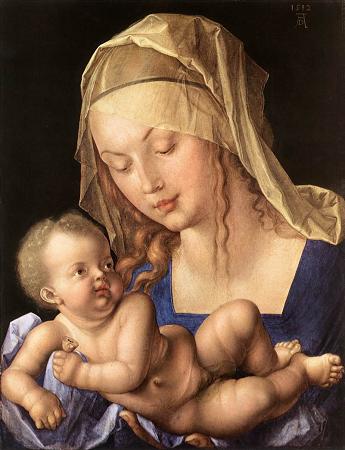German Renaissance Painting. The German Renaissance, part of the Northern Renaissance, was a cultural and artistic movement that spread among German thinkers in the 15th and 16th centuries, which developed from the Italian Renaissance. Many areas of the arts and sciences were influenced, notably by the spread of Renaissance humanism to the various German states and principalities. There were many advances made in the fields of architecture, the arts, and the sciences. Germany produced two developments that were to dominate the 16th century all over Europe: printing and the Protestant Reformation. One of the most important German humanists was Konrad Celtis. Celtis studied at Cologne and Heidelberg, and later travelled throughout Italy collecting Latin and Greek manuscripts. Heavily influenced by Tacitus, he used the Germania to introduce German history and geography. Eventually he devoted his time to poetry, in which he praised Germany in Latin. Another important figure was Johann Reuchlin who studied in various places in Italy and later taught Greek. He studied the Hebrew language, aiming to purify Christianity, but encountered resistance from the church. The most significant German Renaissance artist is Albrecht Durer especially known for his printmaking in woodcut and engraving, which spread all over Europe, drawings, and painted portraits. Important architecture of this period includes the Landshut Residence, Heidelberg Castle, the Augsburg Town Hall as well as the Antiquarium of the Munich Residenz in Munich, the largest Renaissance hall north of the Alps. The Renaissance was largely driven by the renewed interest in classical learning, and was also the result of rapid economic development. At the beginning of the 16th century, Germany was one of the most prosperous areas in Europe despite a relatively low level of urbanization compared to Italy or the Netherlands. It benefited from the wealth of certain sectors such as metallurgy, mining, banking and textiles. More importantly, book-printing developed in Germany, and German printers dominated the new book-trade in most other countries until well into the 16th century. The concept of the Northern Renaissance or German Renaissance is somewhat confused by the continuation of the use of elaborate Gothic ornament until well into the 16th century, even in works that are undoubtedly Renaissance in their treatment of the human figure and other respects. Classical ornament had little historical resonance in much of Germany, but in other respects Germany was very quick to follow developments, especially in adopting printing with movable type, a German invention that remained almost a German monopoly for some decades, and was first brought to most of Europe, including France and Italy, by Germans. Printmaking by woodcut and engraving was already more developed in Germany and the Low Countries than elsewhere in Europe, and the Germans took the lead in developing book illustrations, typically of a relatively low artistic standard, but seen all over Europe, with the woodblocks often being lent to printers of editions in other cities or languages. The greatest artist of the German Renaissance, Albrecht Durer, began his career as an apprentice to a leading workshop in Nuremberg, that of Michael Wolgemut, who had largely abandoned his painting to exploit the new medium. Durer worked on the most extravagantly illustrated book of the period, the Nuremberg Chronicle, published by his godfather Anton Koberger, Europe's largest printer-publisher at the time. After completing his apprenticeship in 1490, Durer travelled in Germany for four years, and Italy for a few months, before establishing his own workshop in Nuremberg. He rapidly became famous all over Europe for his energetic and balanced woodcuts and engravings, while also painting. Though retaining a distinctively German style, his work shows strong Italian influence, and is often taken to represent the start of the German Renaissance in visual art, which for the next forty years replaced the Netherlands and France as the area producing the greatest innovation in Northern European art. Durer supported Martin Luther but continued to create Madonnas and other Catholic imagery, and paint portraits of leaders on both sides of the emerging split of the Protestant Reformation. Durer died in 1528, before it was clear that the split of the Reformation had become permanent, but his pupils of the following generation were unable to avoid taking sides. Most leading German artists became Protestants, but this deprived them of painting most religious works, previously the mainstay of artists' revenue.
more...













